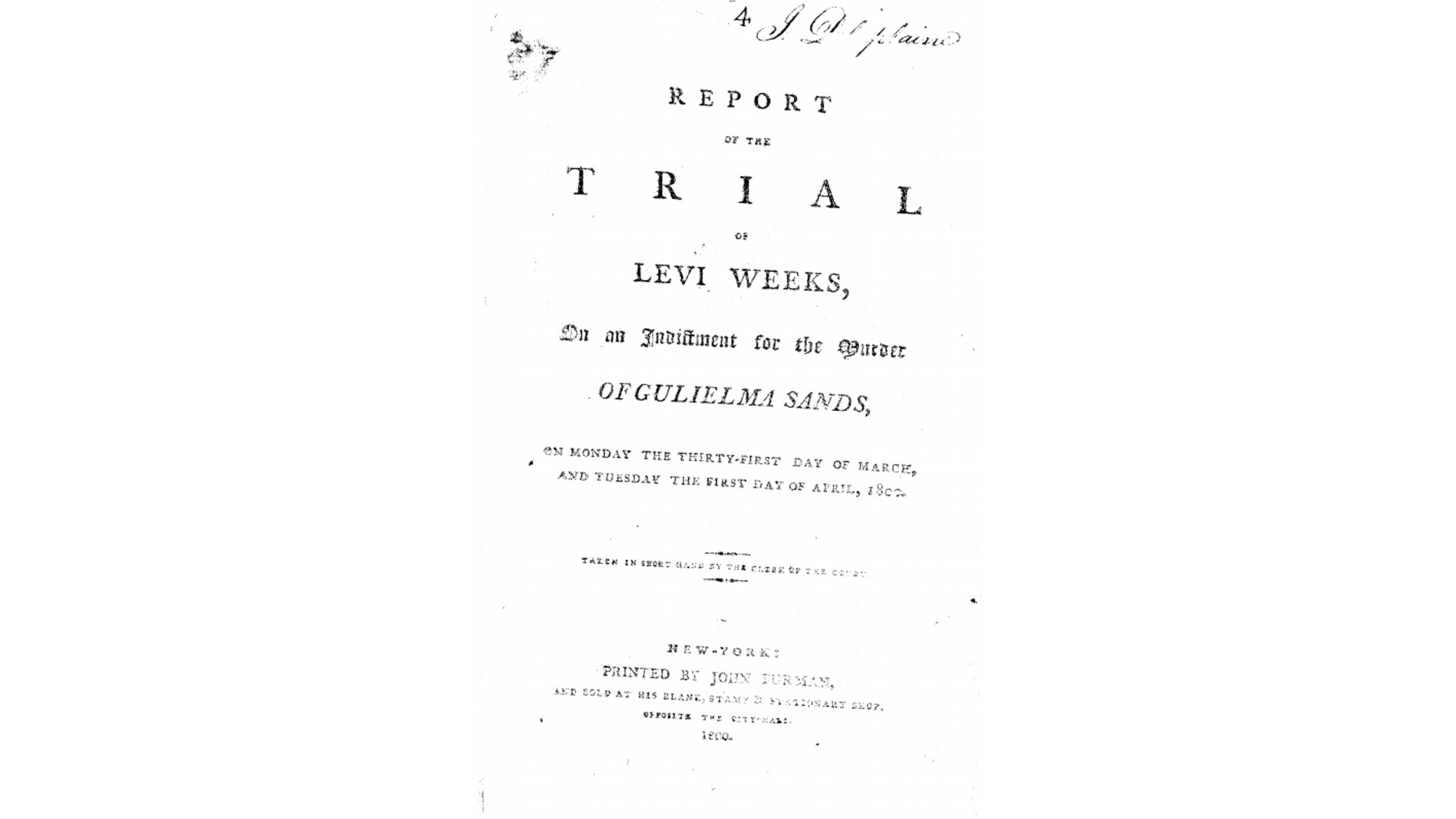First Murder Trial in the United States for which there is a Formal Record
Gulielma “Elma” Sands disappeared on the evening of December 22, 1799. Before leaving her boarding house that evening, Elma told her cousin Catherine Sands that she was to be secretly married that night to the man who had been courting her, Levi Weeks. A few days after Elma Sands vanished, a young boy found the muff she had been wearing in the Manhattan Well. On January 2, 1800, Sands’ body was recovered from that well and, while there was speculation at the time that she may have been pregnant, this was later disproved by medical evidence. Shortly afterward, a Grand Jury indicted Levi Weeks for the murder of Elma Sands.
Levi Weeks was the brother of Ezra Weeks, a prominent citizen, and through his brother’s wealth and connections Weeks retained three of New York’s most prominent attorneys, Henry Brockholst Livingston, Aaron Burr, and Alexander Hamilton to represent him at the trial. The court consisted of three judges, Chief Justice John Lansing, Jr., Mayor Richard Harrison and Recorder Richard Varick. The prosecutor was Assistant Attorney General and future Mayor of New York, Cadwallader David Colden. The trial, the first recorded murder trial in the United States, took place on March 31 and April 1, 1800.
The State’s case was entirely circumstantial and the defense produced witnesses who testified that Levi was in the company of his brother Ezra and other friends during the evening in question. Chief Justice Lansing instructed the jury that there was not sufficient proof against Levi Weeks to warrant a decision against him, but he stopped short of a directed verdict. The jury, deliberating for only five minutes, acquitted Weeks of the crime. Although the State had failed to establish its case, and Judge Lansing’s instruction was proper, his charge to the jury was widely criticized. The public strongly disagreed with the verdict and Weeks was generally ostracized, forcing him to leave New York.
Levi Weeks eventually settled in Natchez, Mississippi where he became a well-respected architect and builder.
Sources
The Library of Congress has digitized the trial transcript (compiled by reporter William Coleman). http://memory.loc.gov/service/gdc/scd0001/2005/20051214001re/20051214001re.pdf
John Davison Lawson, ed. American State Trials (1914)

